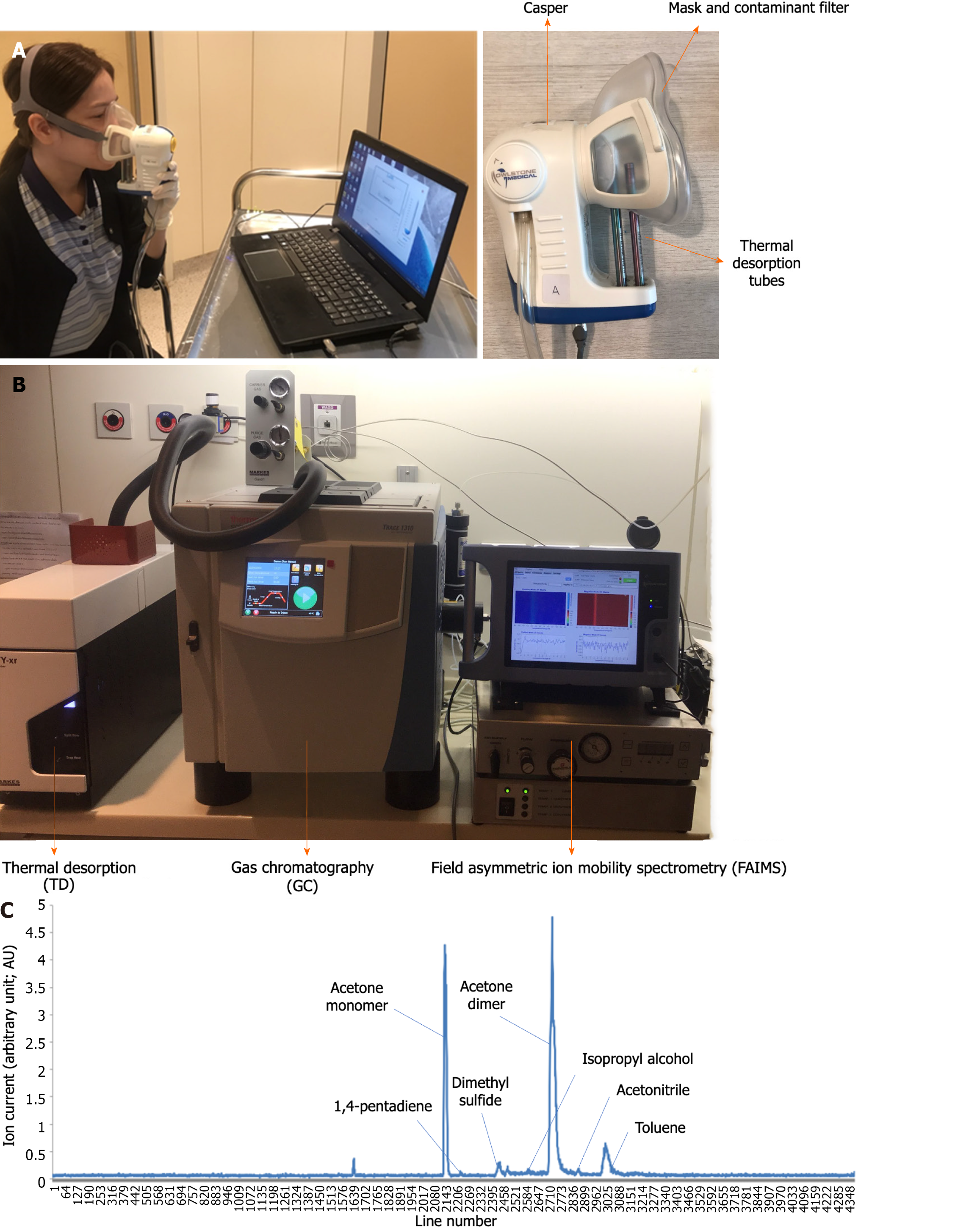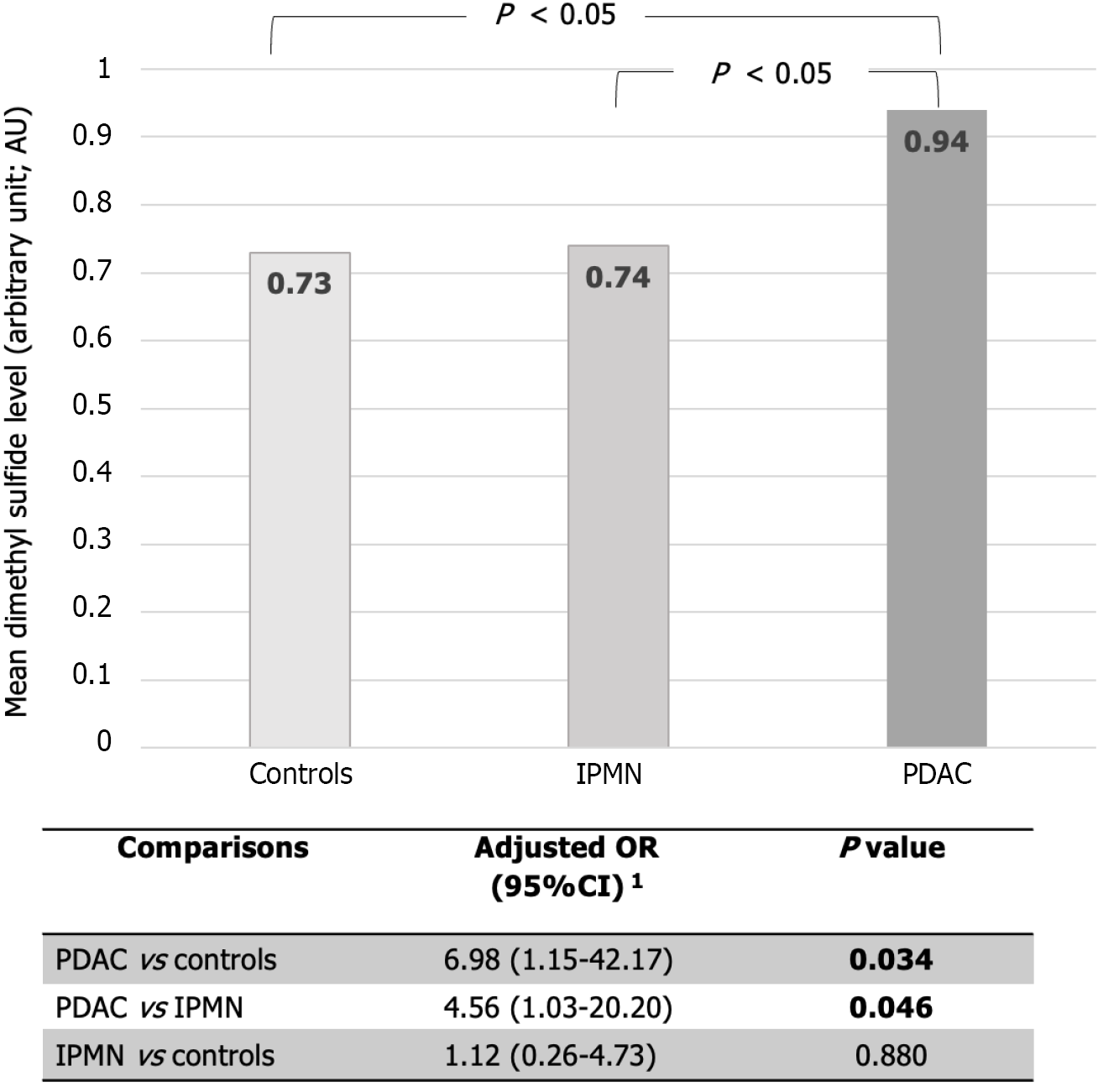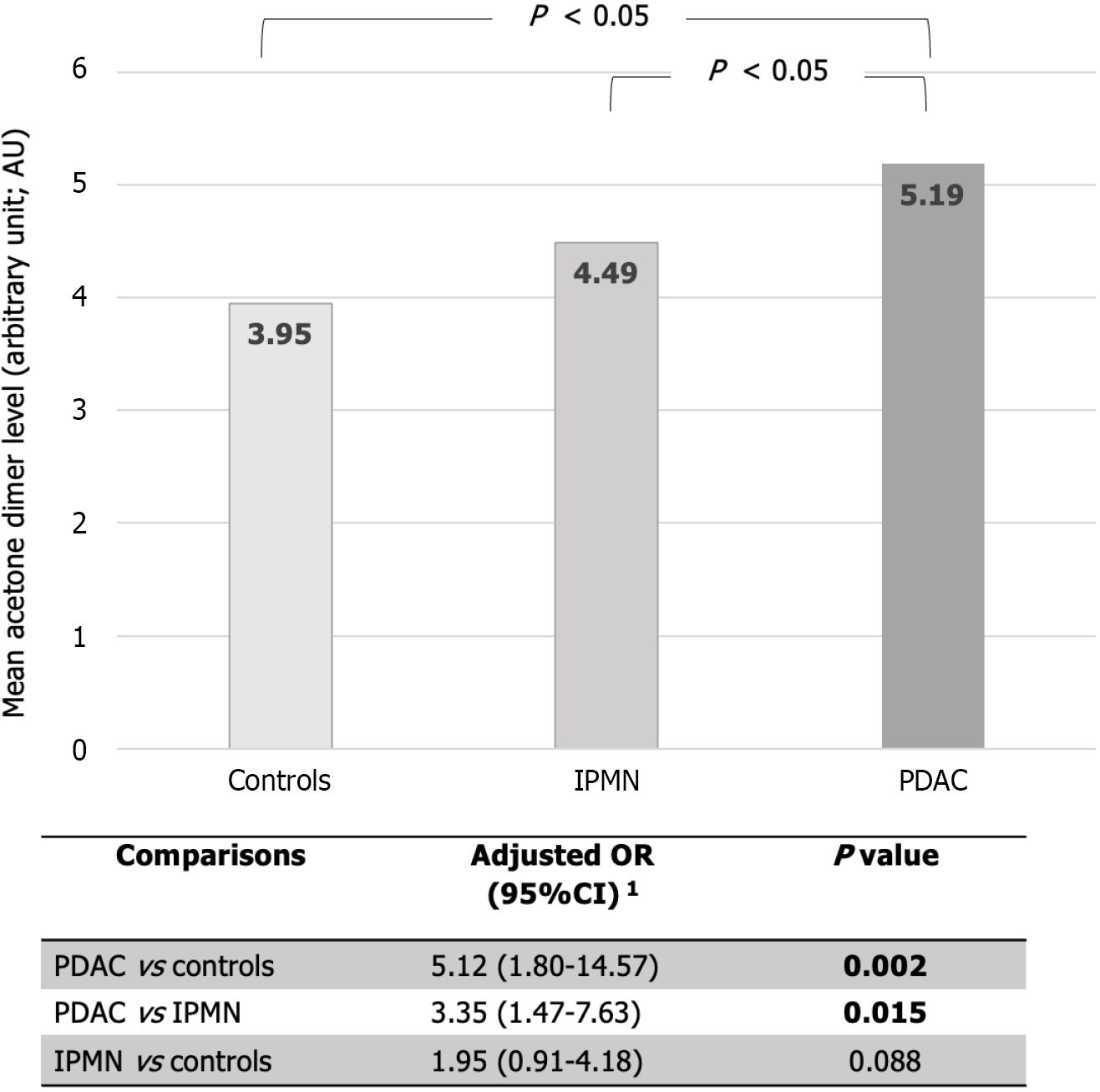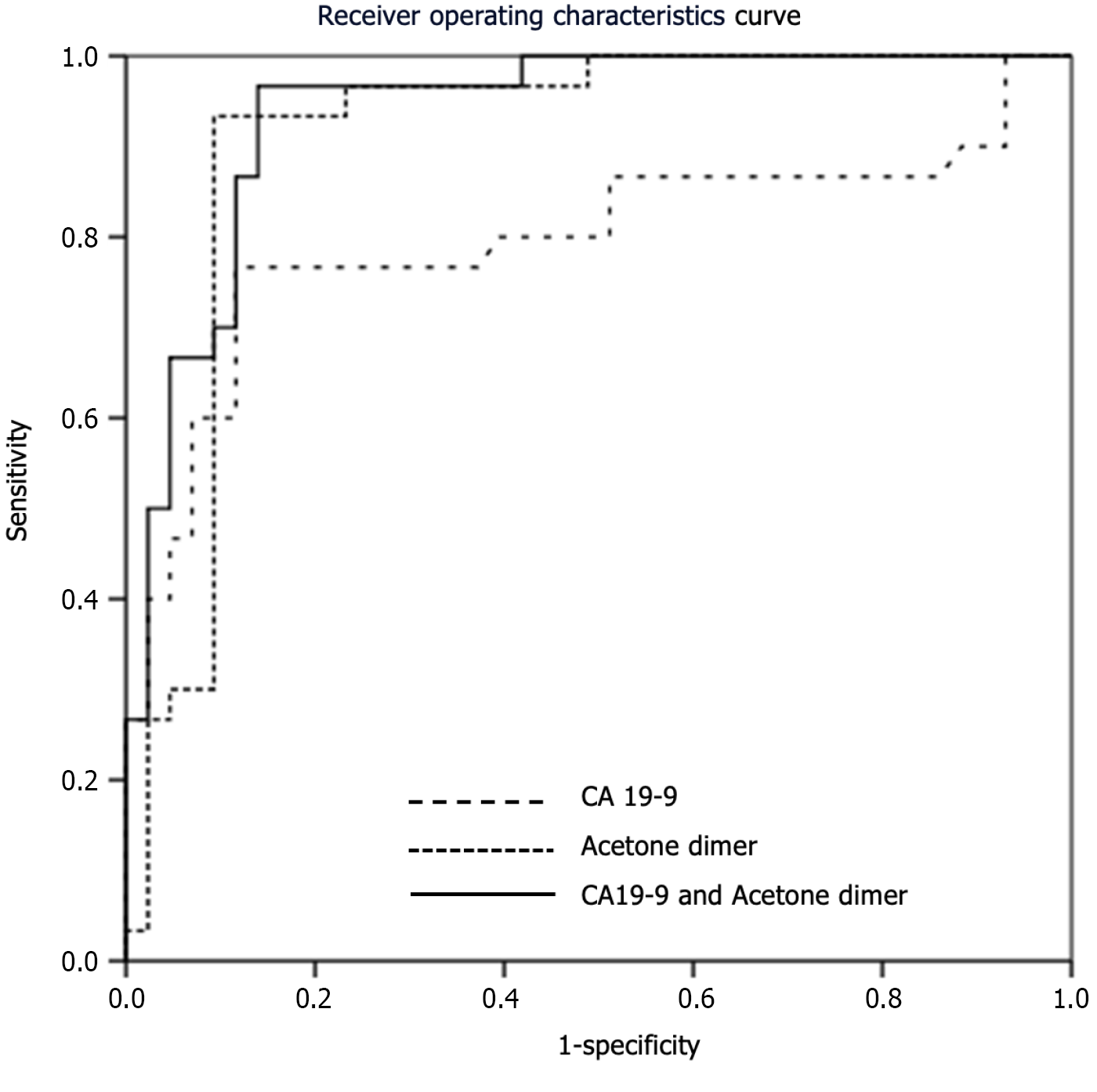Copyright
©The Author(s) 2024.
World J Gastrointest Oncol. Mar 15, 2024; 16(3): 894-906
Published online Mar 15, 2024. doi: 10.4251/wjgo.v16.i3.894
Published online Mar 15, 2024. doi: 10.4251/wjgo.v16.i3.894
Figure 1 Equipment for breath samples collection, volatile organic compound extraction, and volatile organic compound analysis.
A: ReCIVA™ breath sample system; B: Thermal desorption-gas chromatography/field asymmetric ion mobility spectrometry machine; C: Volatile organic compound chromatogram.
Figure 2 Comparisons of dimethyl sulfide between the pancreatic adenocarcinoma, Intraductal papillary mucinous neoplasm, and control groups.
1Adjusted for albumin, total bilirubin, serum glutamic oxalacetic transaminase, serum glutamic pyruvic transaminase, alkaline phosphatase and international normalized ratio. IPMN: Intraductal papillary mucinous neoplasm; PDAC: Pancreatic ductal adenocarcinoma.
Figure 3 Comparisons of acetone dimers level between pancreatic adenocarcinoma, Intraductal papillary mucinous neoplasm, and control group.
1Adjusted for albumin, total bilirubin, serum glutamic oxalacetic transaminase, serum glutamic pyruvic transaminase, alkaline phosphatase and international normalized ratio. IPMN: Intraductal papillary mucinous neoplasm; PDAC: Pancreatic ductal adenocarcinoma.
Figure 4 Area under the receiver operating characteristics curves of the acetone dimer, CA19-9 and combination of the acetone dimer and CA19-9.
- Citation: Tiankanon K, Pungpipattrakul N, Sukaram T, Chaiteerakij R, Rerknimitr R. Identification of breath volatile organic compounds to distinguish pancreatic adenocarcinoma, pancreatic cystic neoplasm, and patients without pancreatic lesions. World J Gastrointest Oncol 2024; 16(3): 894-906
- URL: https://www.wjgnet.com/1948-5204/full/v16/i3/894.htm
- DOI: https://dx.doi.org/10.4251/wjgo.v16.i3.894
















